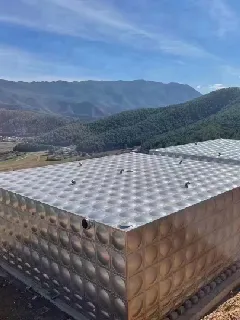loading...
- No. 9, Xingyuan South Street, Dongwaihuan Road, Zaoqiang County, Hengshui, Hebei, China
- admin@zjcomposites.com
- +86 15097380338
- Welcome to visit our website!
Exploring the Benefits of Reverse Osmosis Membrane Housing Solutions
Understanding RO Membrane Housing A Key Component in Water Purification
Reverse osmosis (RO) systems have revolutionized the way we approach water purification. At the heart of these systems lies the RO membrane, a semipermeable barrier that effectively removes contaminants from water. However, the performance and longevity of this vital component depend significantly on its housing, known as the RO membrane housing. In this article, we will explore the importance of RO membrane housing, its construction, and its impact on the overall efficiency of water purification systems.
What is RO Membrane Housing?
RO membrane housing is a specialized container designed to protect and support the RO membrane during the filtration process. Typically made from durable materials such as fiberglass, nylon, or polycarbonate, this housing serves multiple functions. It not only encases the membrane but also provides necessary structural integrity, ensures proper fluid flow, and facilitates maintenance.
Key Functions of RO Membrane Housing
1. Protection One of the primary roles of RO membrane housing is to protect the membrane from physical damage and contamination. Given that RO membranes are delicate and can be damaged by excessive pressure, chemicals, or physical impact, robust housing is essential to increase their durability and lifespan.
2. Optimal Flow Management The design of the RO membrane housing is critical in ensuring that water flows evenly across the membrane surface. Uneven flow can lead to channeling, a phenomenon where water takes the path of least resistance, resulting in inefficient filtration and increased membrane fouling. Proper housing helps maintain optimal flow rates, ensuring that every part of the membrane is utilized effectively.
ro membrane housing

3. Compatibility Different RO systems have varying requirements, and the housing must be compatible with specific membrane types. Choosing the right housing ensures that the membrane fits snugly while allowing for effective sealing, which prevents leaks and maximizes performance.
4. Ease of Maintenance RO systems require periodic maintenance, and the design of the membrane housing can significantly impact this process. Many contemporary RO membrane housings are designed for easy access, making it simpler to replace membranes or perform cleaning procedures. This ease of maintenance is vital for maintaining the efficiency of the water purification system.
Material Considerations
When it comes to selecting RO membrane housing, the choice of materials is crucial. High-quality materials must resist chemical corrosion and withstand high pressures typically found in RO systems. Common materials include
- Fiberglass This lightweight, yet strong, material is resistant to corrosion, making it an excellent choice for long-term use. - Nylon Known for its toughness and flexibility, nylon is often used in applications where slight modifications in shape are advantageous. - Polycarbonate Transparent and highly impact-resistant, polycarbonate allows for monitoring of the membrane condition and performance.
Conclusion
In conclusion, RO membrane housing is a critical component in the realm of water purification. It not only serves to protect the membrane but also plays a crucial role in ensuring efficient water flow and facilitating maintenance. As we continue to seek cleaner and safer water, understanding and investing in high-quality RO membrane housing will be essential for optimizing the performance of reverse osmosis systems. Whether for residential or industrial applications, choosing the right housing can significantly impact the overall effectiveness and longevity of water treatment solutions, making it a cornerstone of modern water purification technology.
-
The Rise of FRP Profiles: Strong, Lightweight, and Built to LastNewsJul.14,2025
-
SMC Panel Tanks: A Modern Water Storage Solution for All EnvironmentsNewsJul.14,2025
-
GRP Grating: A Modern Solution for Safe and Durable Access SystemsNewsJul.14,2025
-
Galvanized Steel Water Tanks: Durable, Reliable, and Ready for UseNewsJul.14,2025
-
FRP Mini Mesh Grating: The Safer, Smarter Flooring SolutionNewsJul.14,2025
-
Exploring FRP Vessels: Durable Solutions for Modern Fluid HandlingNewsJul.14,2025
-
GRP Structures: The Future of Lightweight, High-Performance EngineeringNewsJun.20,2025
